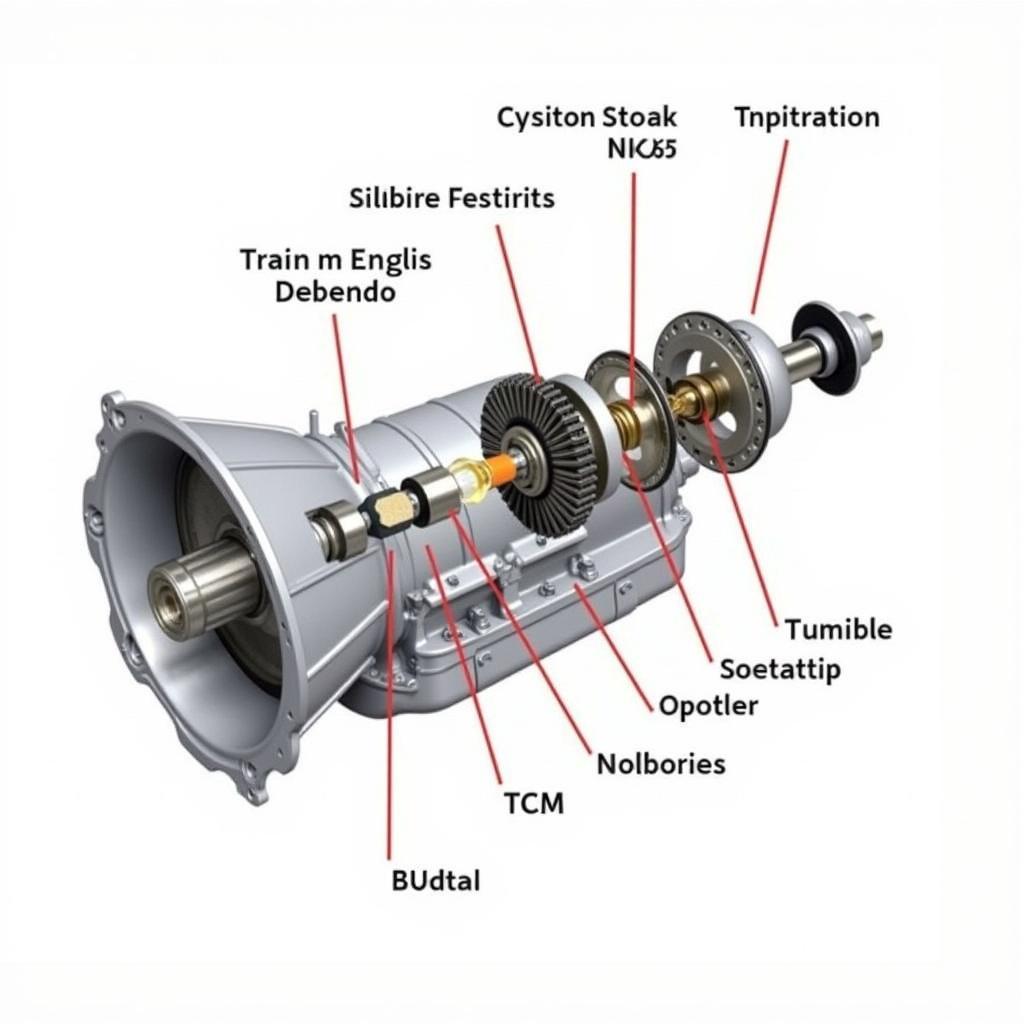Your cart is currently empty!

Mastering Ross-Tech Transmission Adaptation: A Comprehensive Guide
Ross-Tech transmission adaptation is a crucial procedure for maintaining the optimal performance of your Volkswagen, Audi, Seat, or Skoda vehicle. This process involves using the ross-tech vcds software (VCDS) to recalibrate the transmission control module (TCM) after repairs or component replacements. Properly executed, it ensures smooth shifting, improved fuel economy, and extended transmission life.
Understanding how to perform and when to apply ross-tech transmission adaptation is essential for both DIY enthusiasts and professional mechanics. This guide provides a deep dive into this process, covering its importance, step-by-step instructions, troubleshooting tips, and answers to frequently asked questions.
What is the purpose of ross-tech transmission adaptation? It allows the TCM to relearn the characteristics of the transmission and adjust its operation accordingly.
Why Ross-Tech Transmission Adaptation Matters
After certain repairs or replacements, like a new clutch or valve body, the TCM needs to relearn the operating parameters of the transmission. Without this adaptation, you might experience harsh shifting, slippage, or even decreased fuel efficiency. Ross-Tech transmission adaptation allows the TCM to compensate for wear and tear and optimize shift points for the current state of your transmission. This leads to a smoother, more responsive driving experience. Ignoring this crucial step can lead to premature wear and tear on your transmission, potentially leading to costly repairs down the line. Therefore, a properly performed ross-tech transmission adaptation is vital for maintaining the health and longevity of your vehicle’s transmission.
Performing a Ross-Tech Transmission Adaptation: A Step-by-Step Guide
Before starting, ensure you have the latest version of the ross-tech vagcom (VCDS) software and a compatible interface.
- Connect the VCDS interface to your vehicle’s OBD-II port and launch the software.
- Select “Select Control Module.”
- Choose “Automatic Transmission” (02 – Auto Trans).
- Navigate to “Basic Settings” (04).
- Follow the specific adaptation procedures outlined in your vehicle’s repair manual, as the exact steps can vary between models and transmission types. This is crucial for achieving accurate results and avoiding potential issues.
- Once the adaptation is complete, clear any fault codes and test drive the vehicle to verify proper operation.
 VCDS Software Interface for Transmission Adaptation
VCDS Software Interface for Transmission Adaptation
Troubleshooting Common Issues with Ross-Tech Transmission Adaptation
Sometimes, the adaptation process might not go smoothly. Here are some common issues and how to address them:
- Incorrect Adaptation Values: Double-check the adaptation values entered into the VCDS software. Refer to your vehicle’s repair manual for the correct values.
- Fault Codes: If fault codes appear after the adaptation, diagnose and address the underlying issues before attempting the adaptation again.
- Software or Hardware Issues: Ensure you are using the latest version of the vcds ross tech software and a compatible interface. A faulty cable or outdated software can lead to errors.
“Understanding the nuances of each transmission type is critical for successful adaptation. Don’t hesitate to consult resources or seek expert advice when needed,” advises John Miller, a seasoned automotive technician with over 20 years of experience.
When to Perform Ross-Tech Transmission Adaptation
Several situations necessitate a ross-tech transmission adaptation:
- After replacing the transmission control module (TCM)
- After replacing the transmission valve body
- After replacing the clutch or related components
- After performing software updates to the TCM
- If experiencing rough shifting or other transmission-related issues
 Car Transmission Components Requiring Adaptation
Car Transmission Components Requiring Adaptation
Optimizing Your Transmission’s Performance with Ross-Tech
Ross-tech transmission adaptation is a powerful tool for optimizing your transmission’s performance. By using the ross-tech hex can software, you can ensure smooth shifting, improved fuel efficiency, and a longer lifespan for your transmission. Remember to always consult your vehicle’s repair manual and follow the specific procedures outlined for your model and transmission type.
“Regular maintenance and proper adaptation techniques are essential for maximizing the life and performance of your transmission,” adds Maria Sanchez, a certified automotive engineer.
Conclusion
Ross-tech transmission adaptation is a vital procedure for maintaining the optimal performance and longevity of your vehicle’s transmission. By understanding the process and following the steps outlined in this guide, you can ensure smooth shifting, improved fuel economy, and avoid potential transmission problems. Remember to consult your vehicle’s repair manual for specific instructions and don’t hesitate to connect with us for further assistance at vcdstool, +1 (641) 206-8880 and our email address: vcdstool@gmail.com, or visit our office at 6719 W 70th Ave, Arvada, CO 80003, USA.
FAQ
- What is ross-tech transmission adaptation?
- It’s a procedure using VCDS to recalibrate the transmission control module (TCM) after repairs.
- When should I perform this adaptation?
- After repairs like clutch replacement or TCM software updates.
- What are the benefits of this procedure?
- Smoother shifting, improved fuel economy, and extended transmission life.
- What if I encounter problems during the adaptation?
- Double-check values, diagnose fault codes, and ensure software/hardware compatibility.
- Where can I find specific instructions for my vehicle?
- Consult your vehicle’s repair manual.
- What tools do I need for this procedure?
- A ross-tech transmission adaptation interface and the VCDS software.
- Why is it important to use the correct adaptation values?
- Using incorrect values can lead to poor shifting performance or even damage the transmission.
by
Tags:
Leave a Reply